
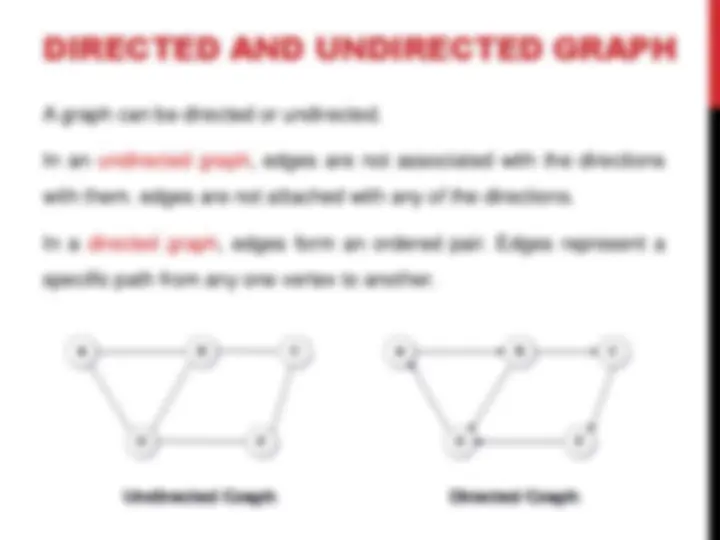



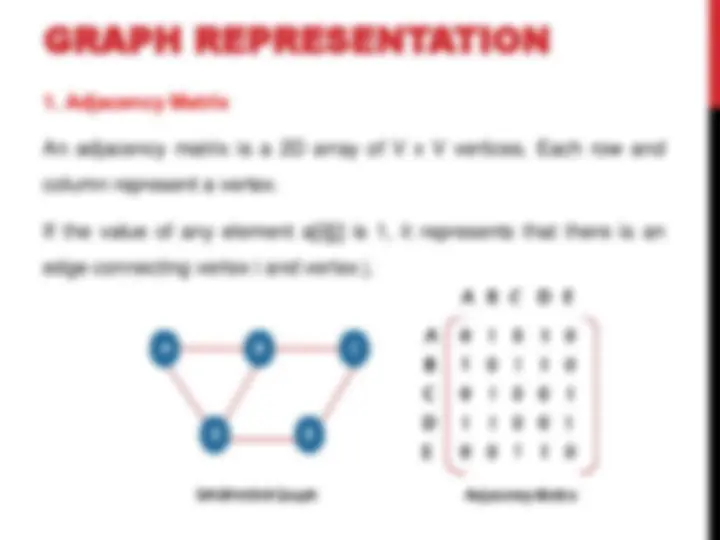
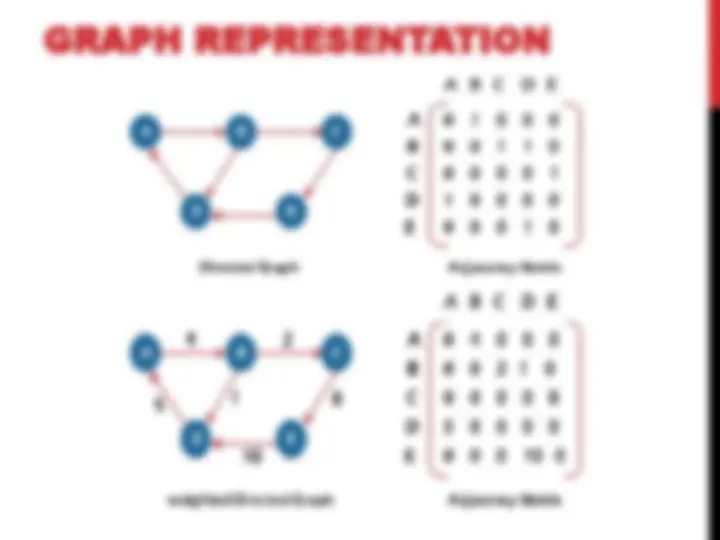

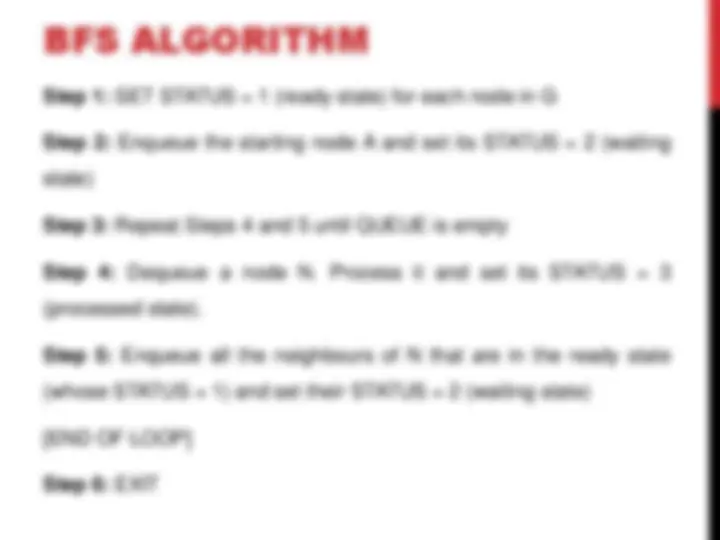
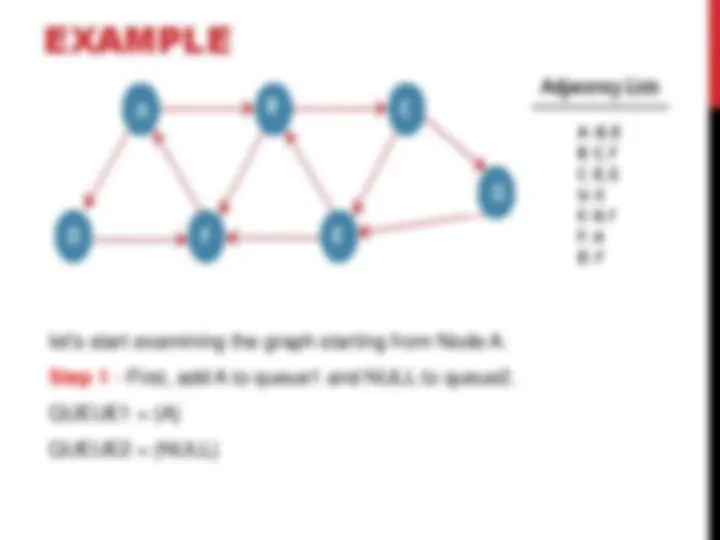
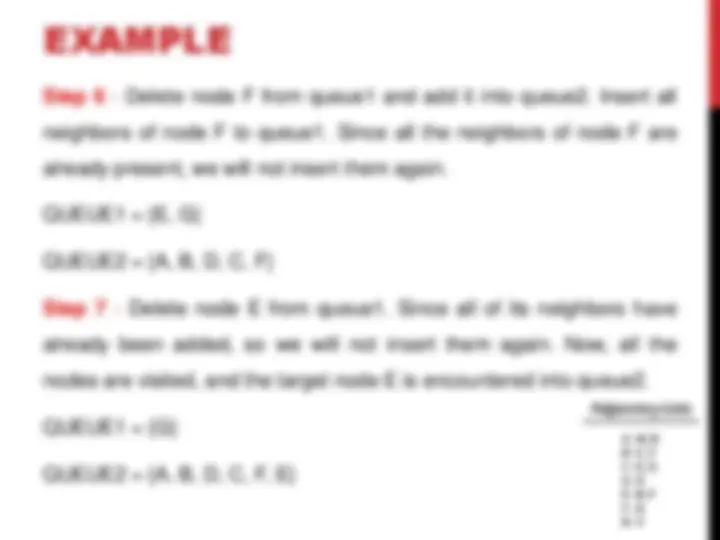
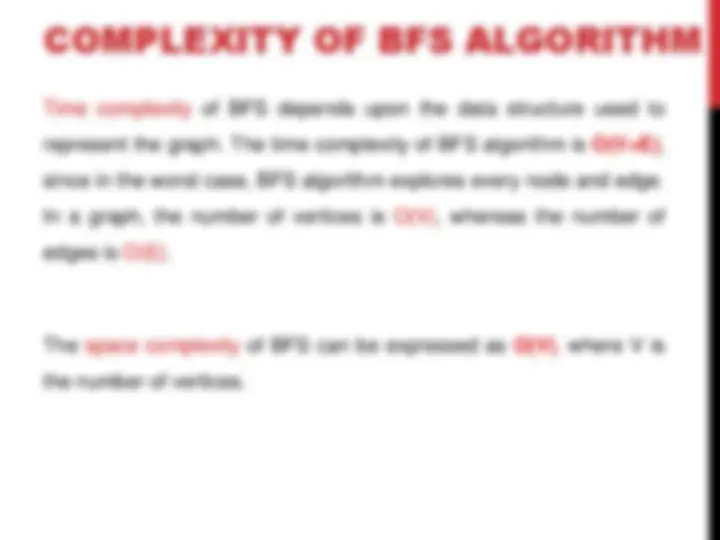
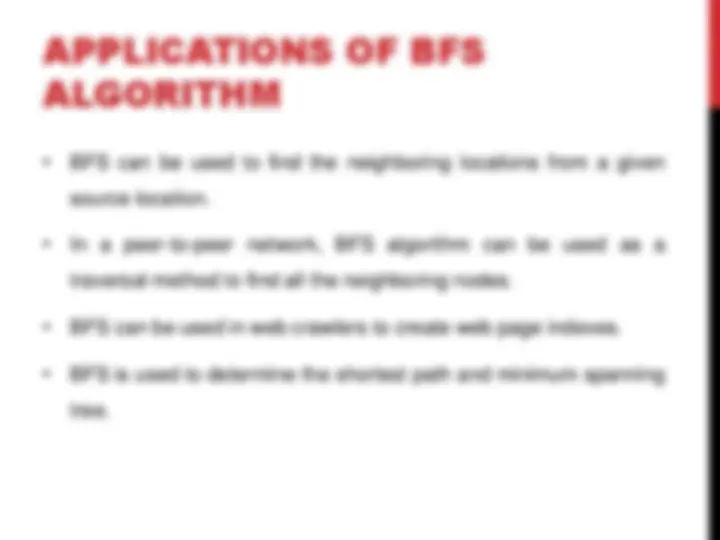

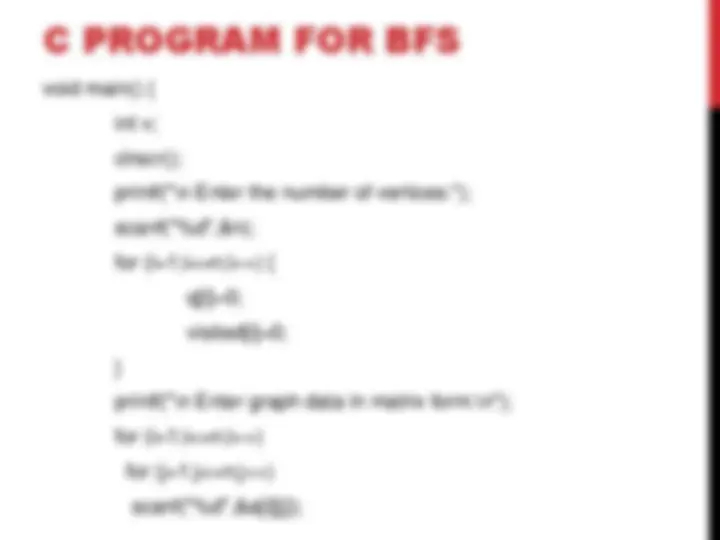

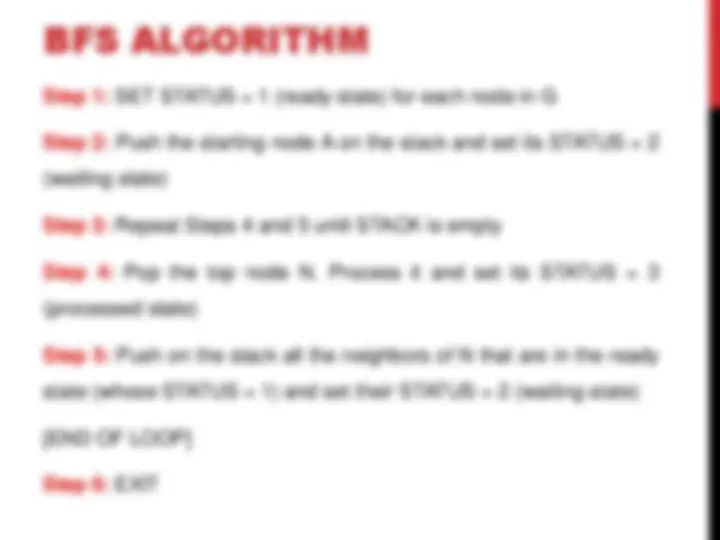
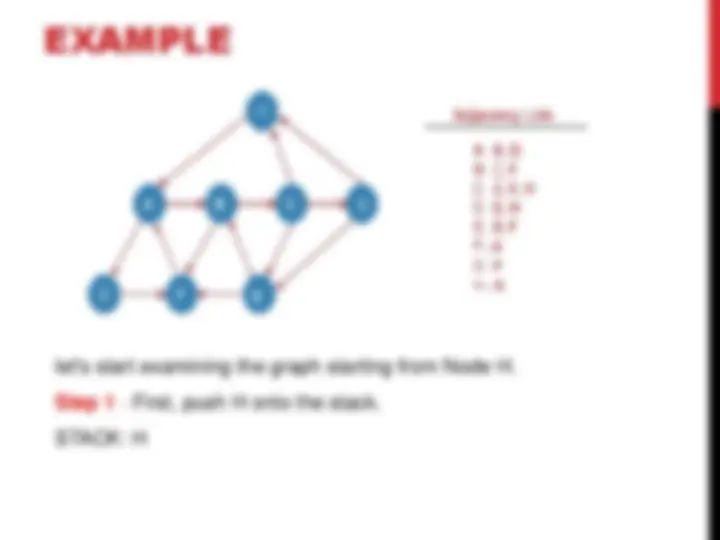
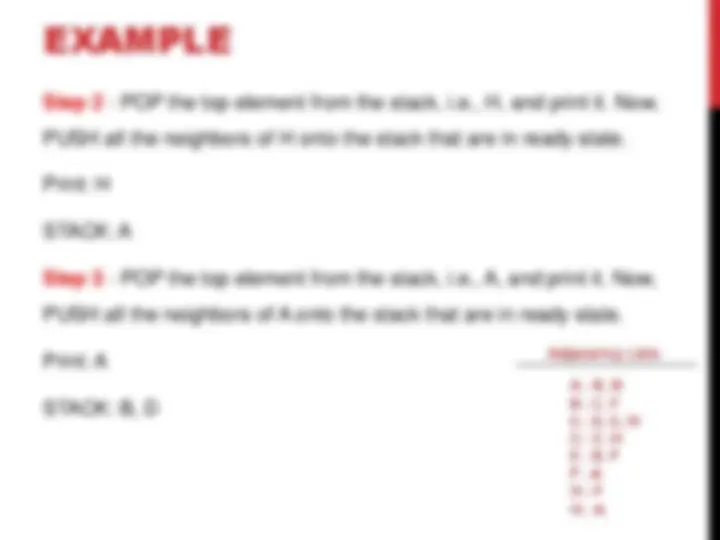
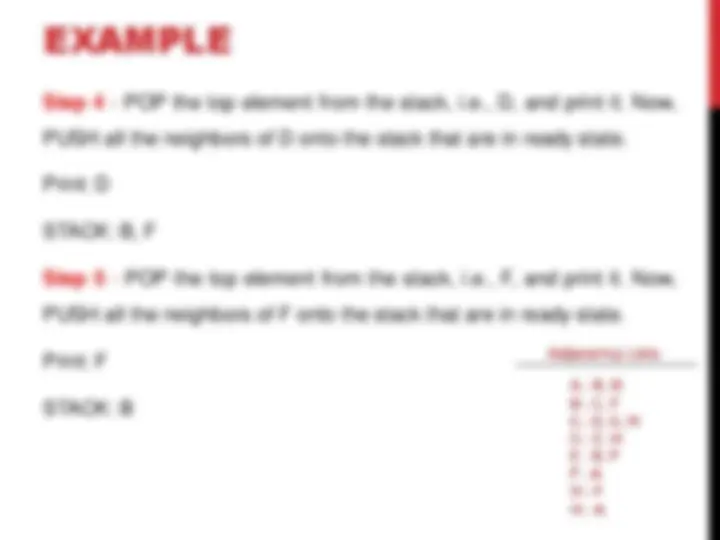
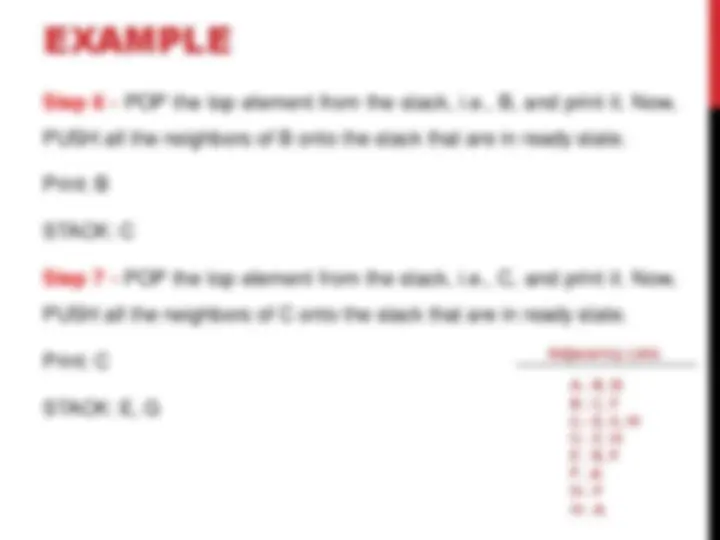
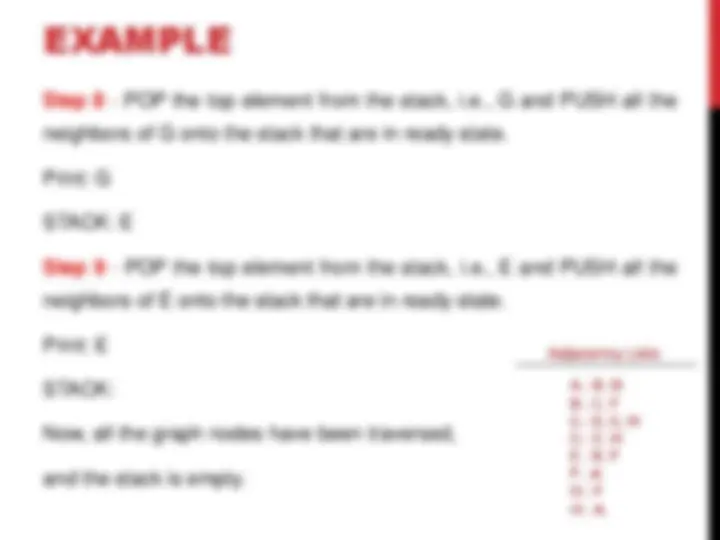
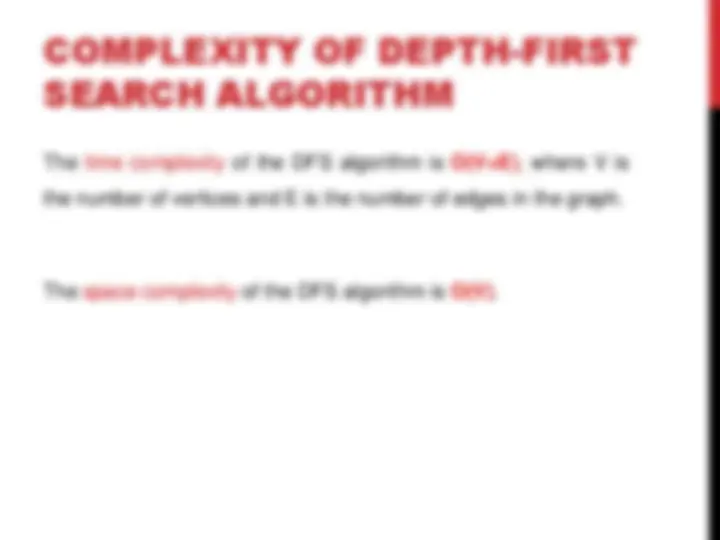
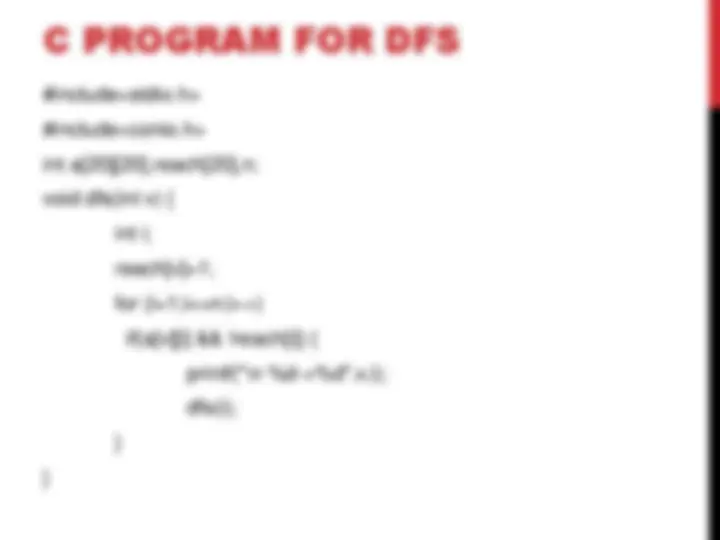
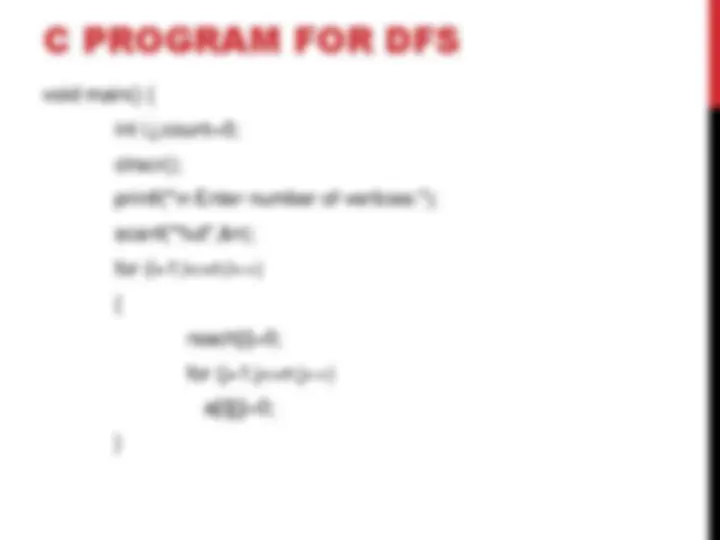
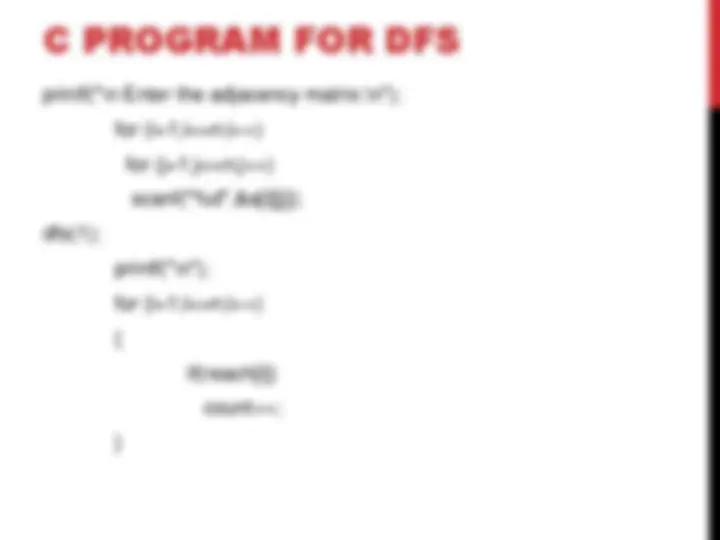

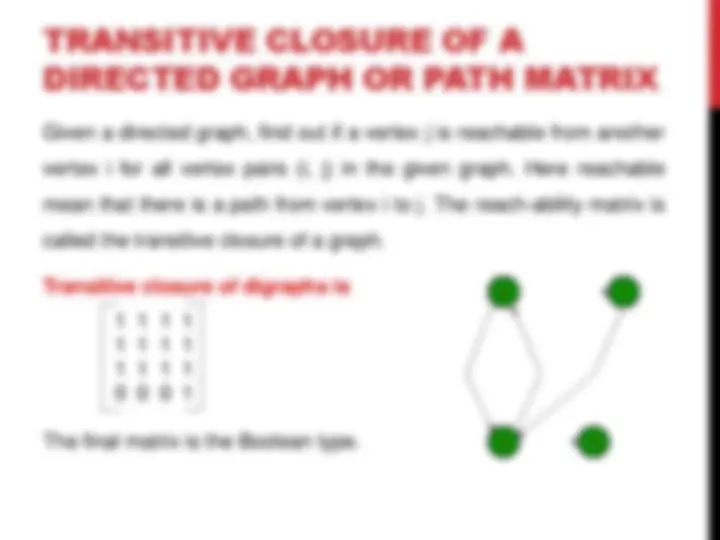
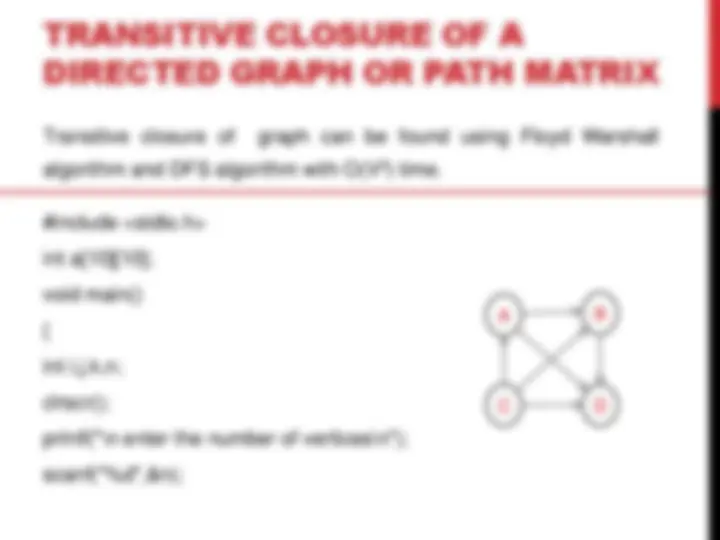
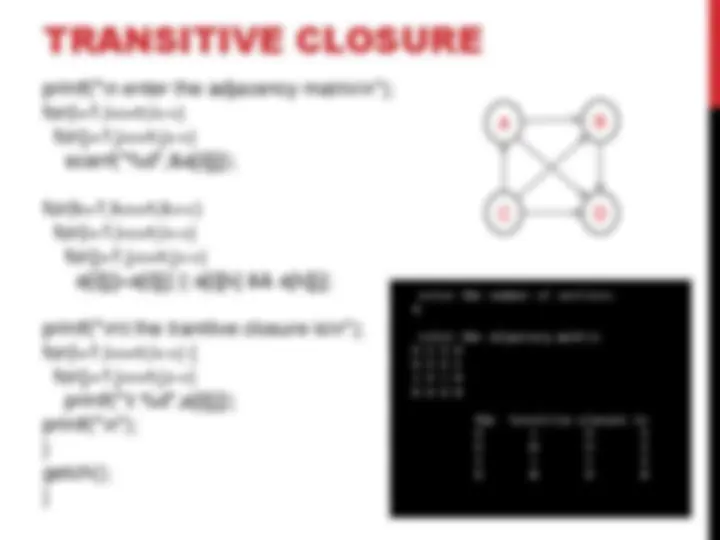
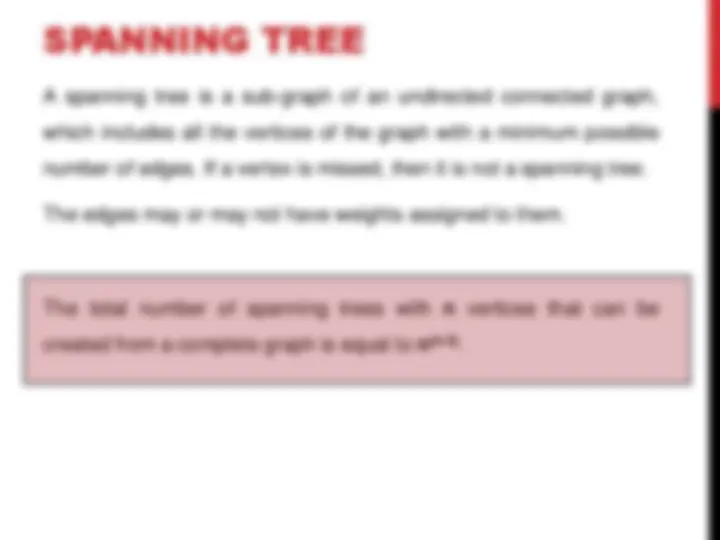
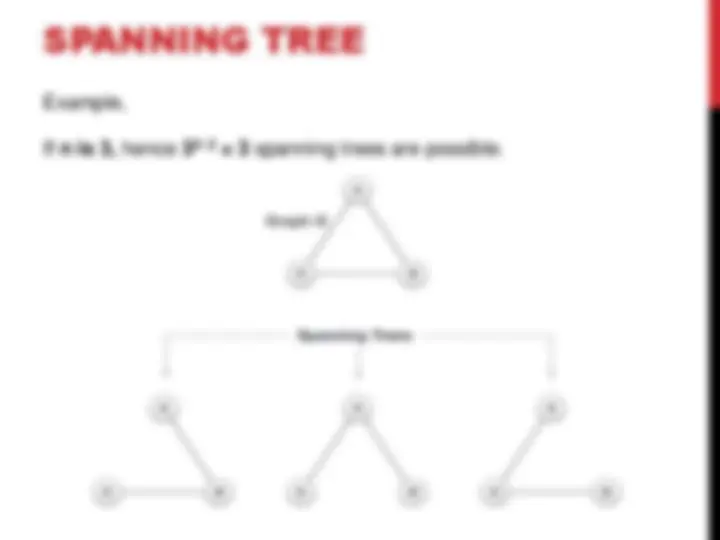
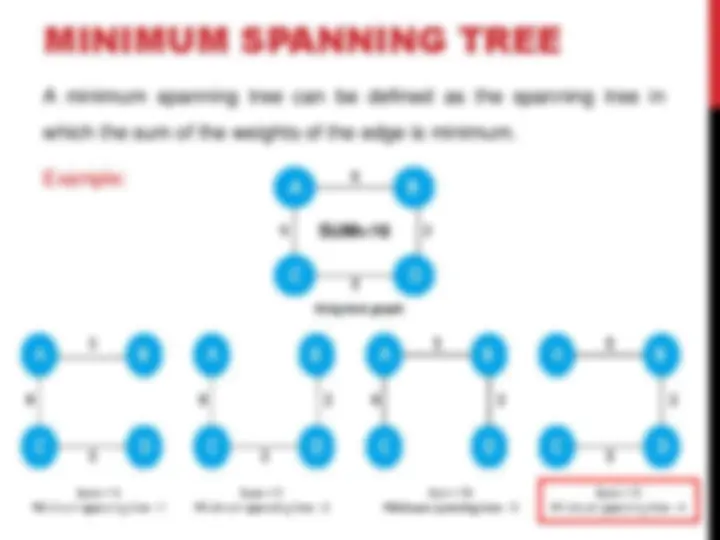



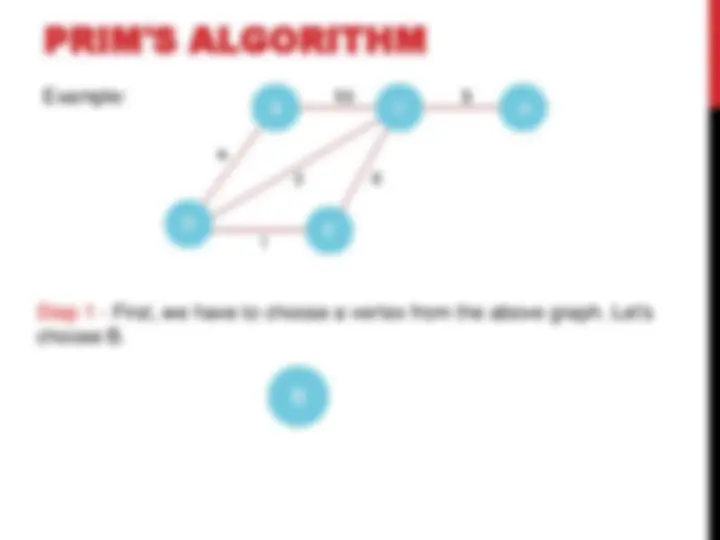
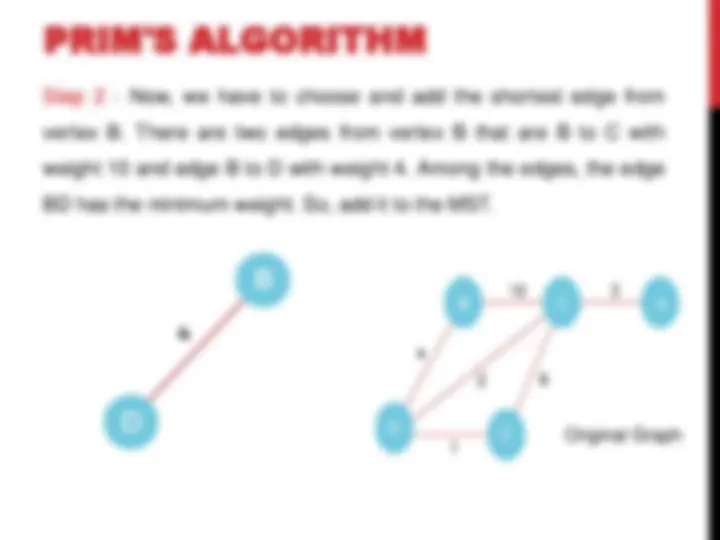
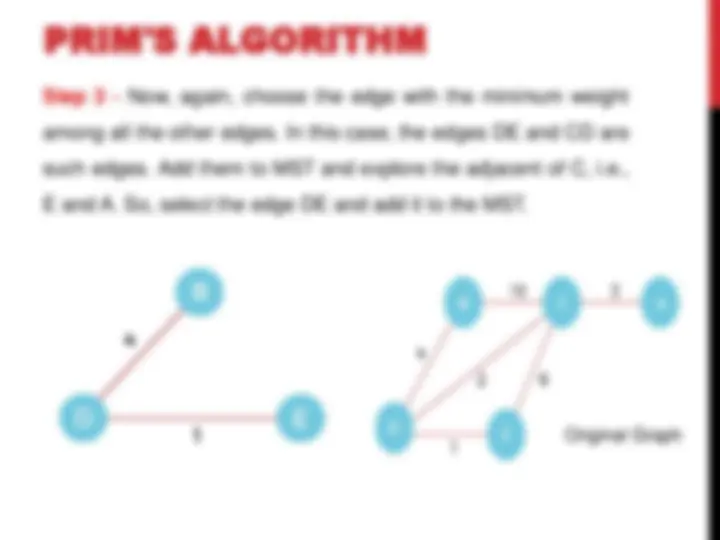
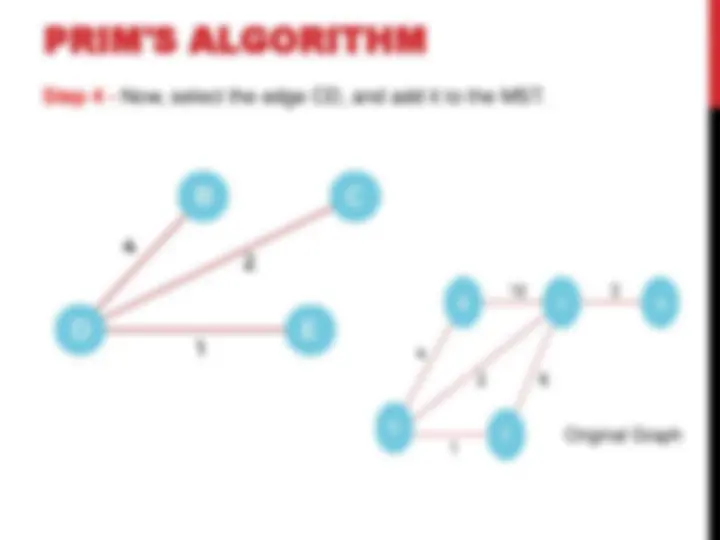
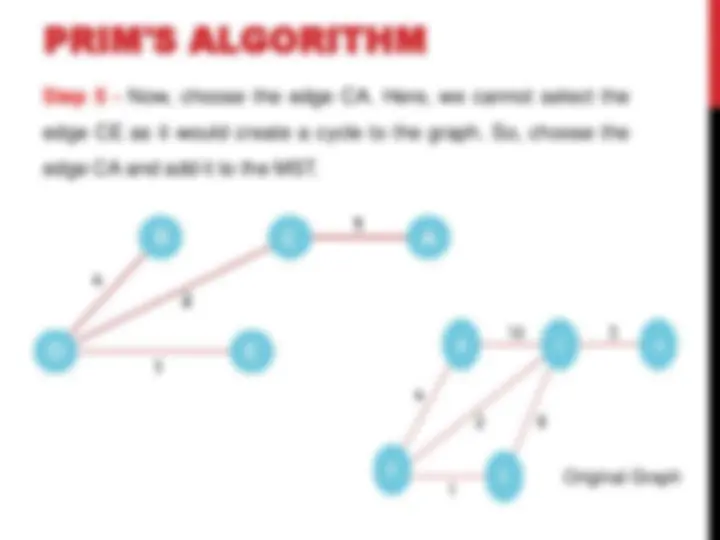
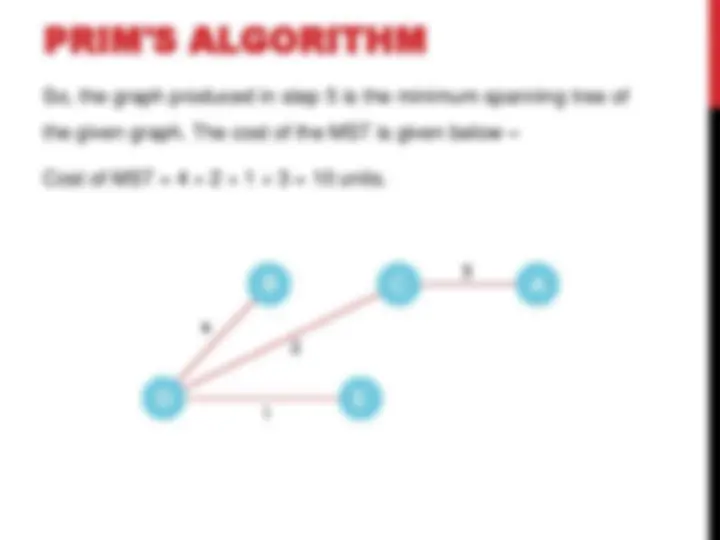

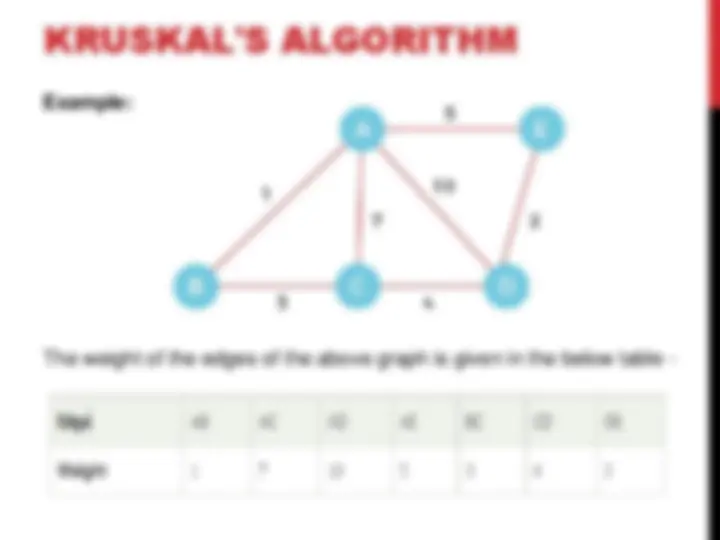
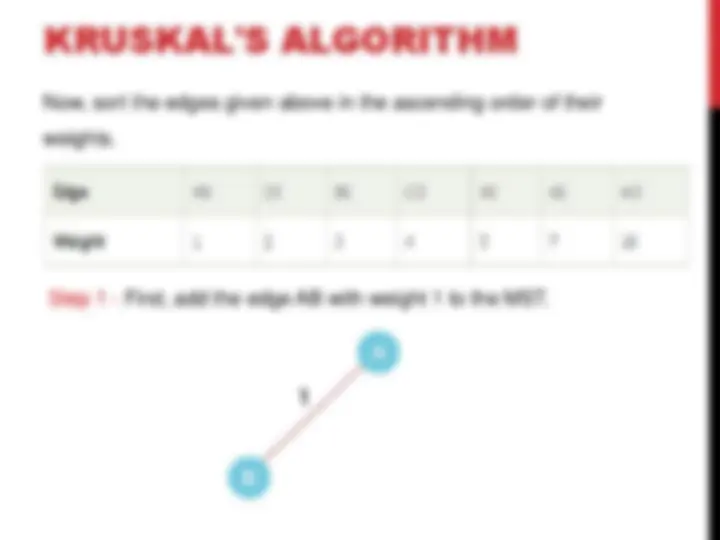
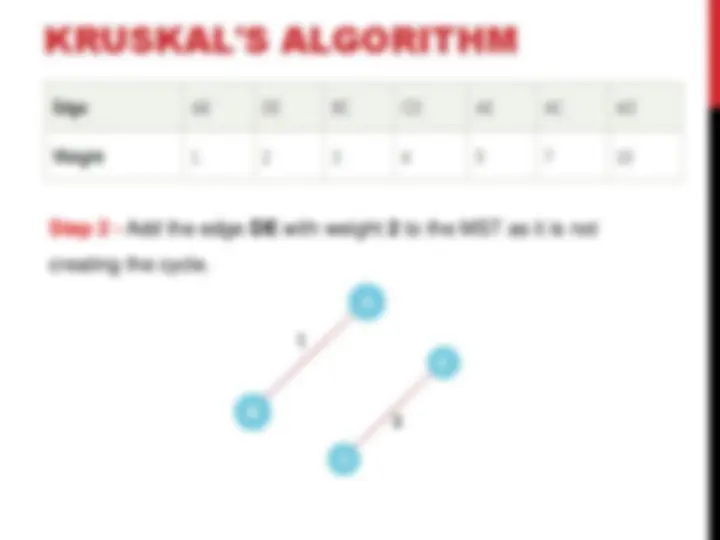
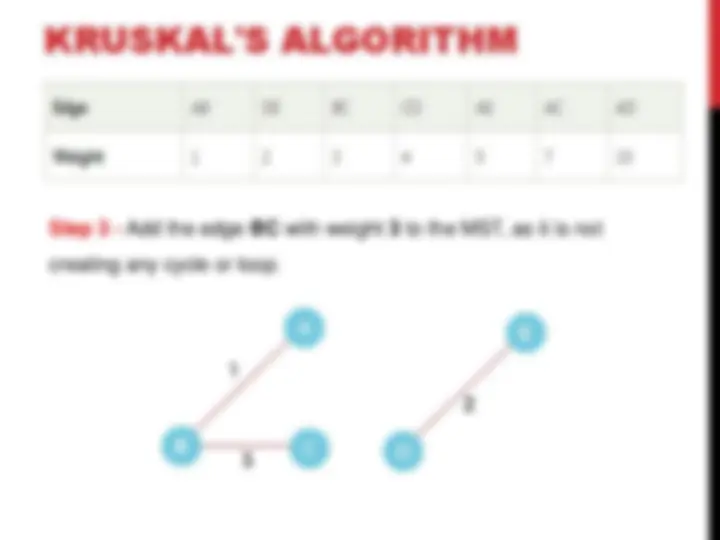
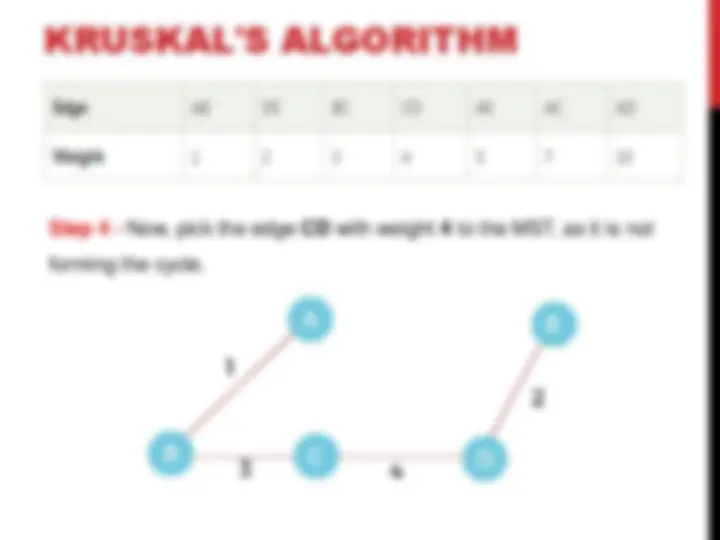
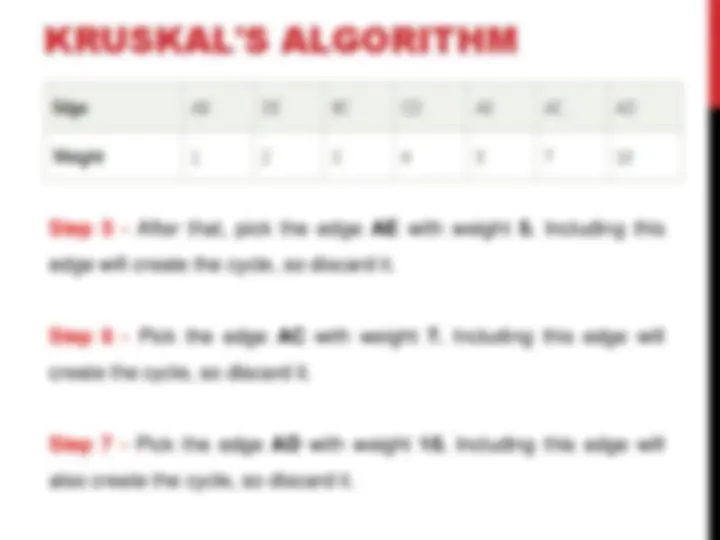
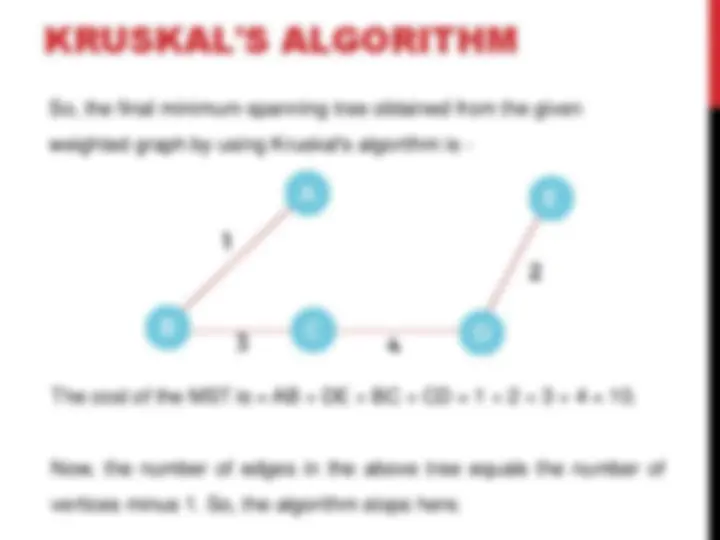
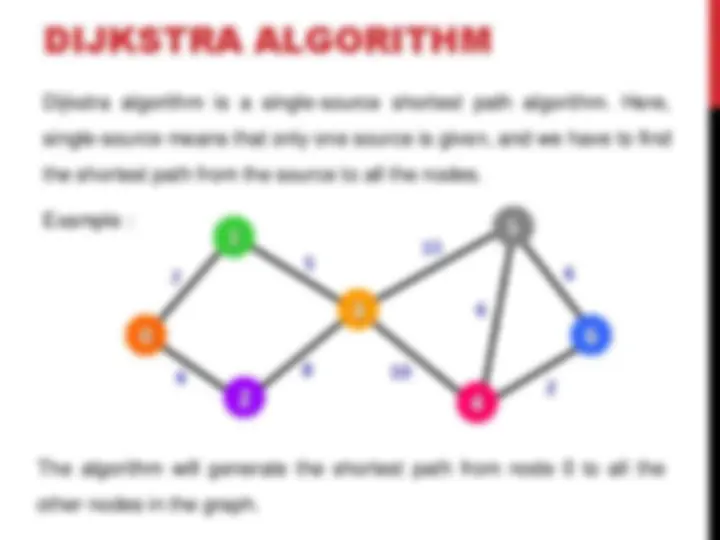

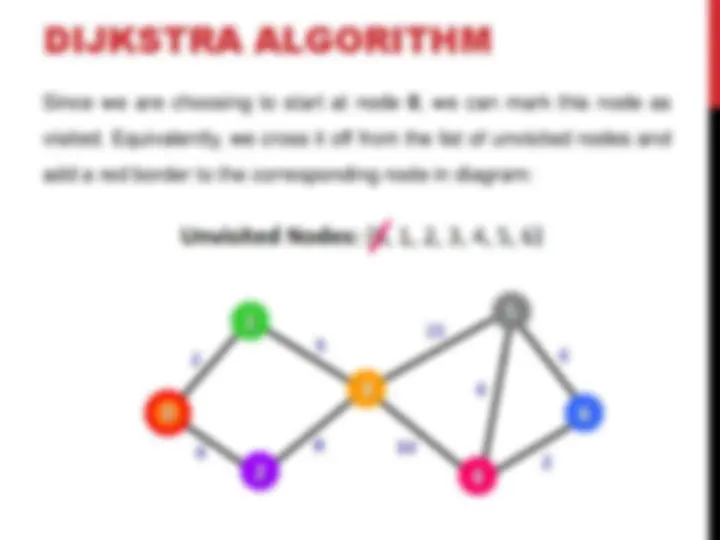
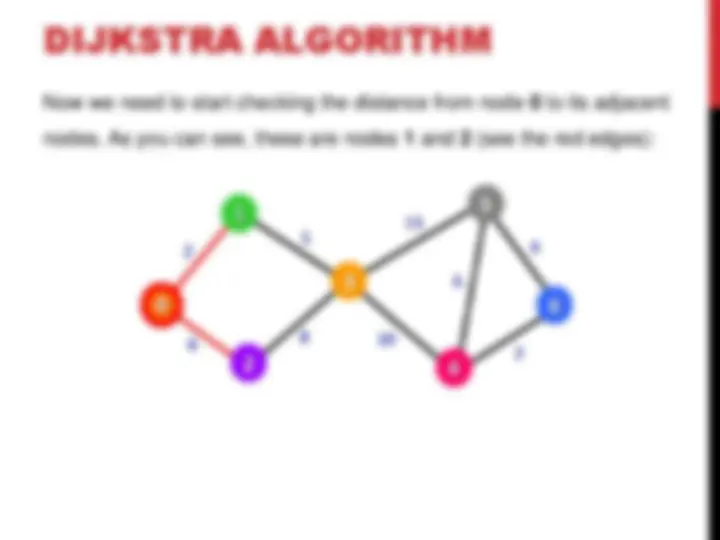
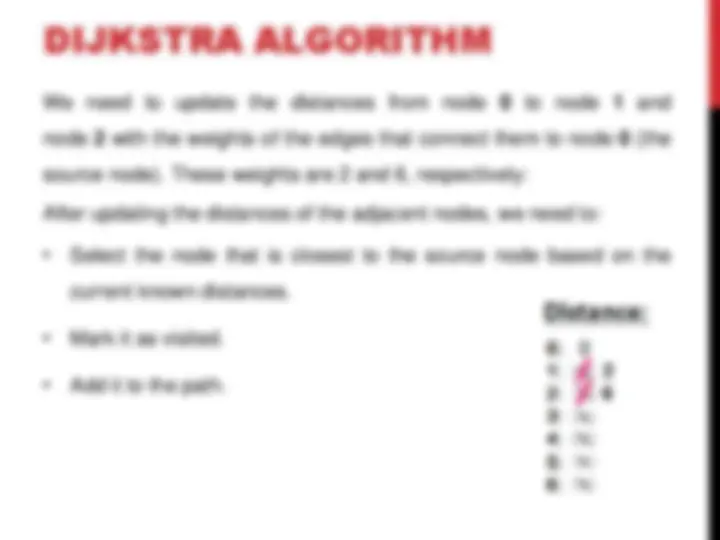
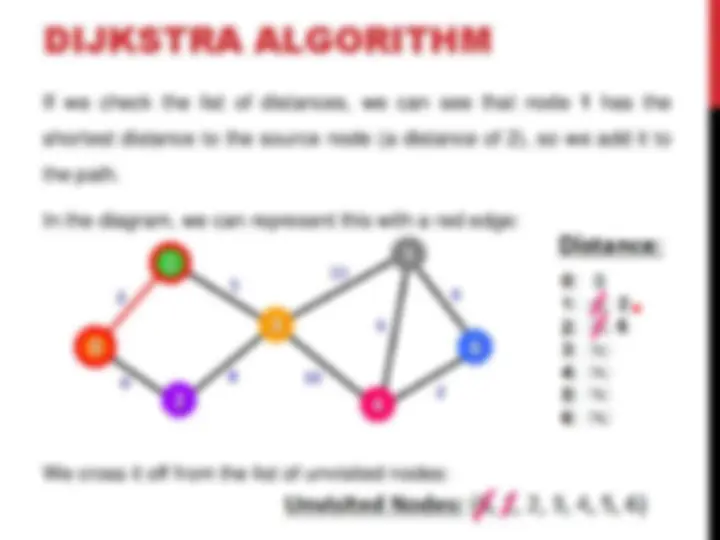

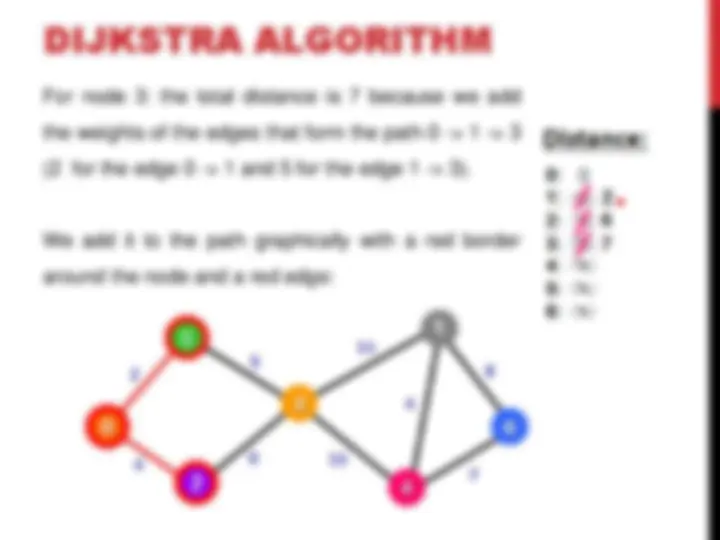
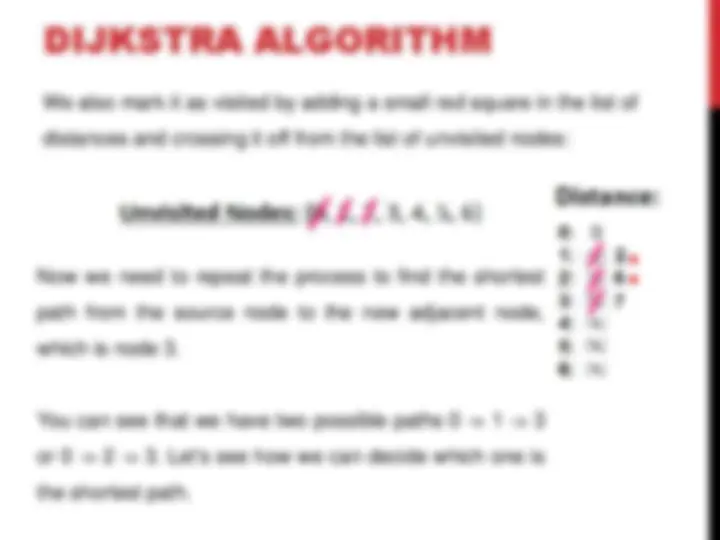
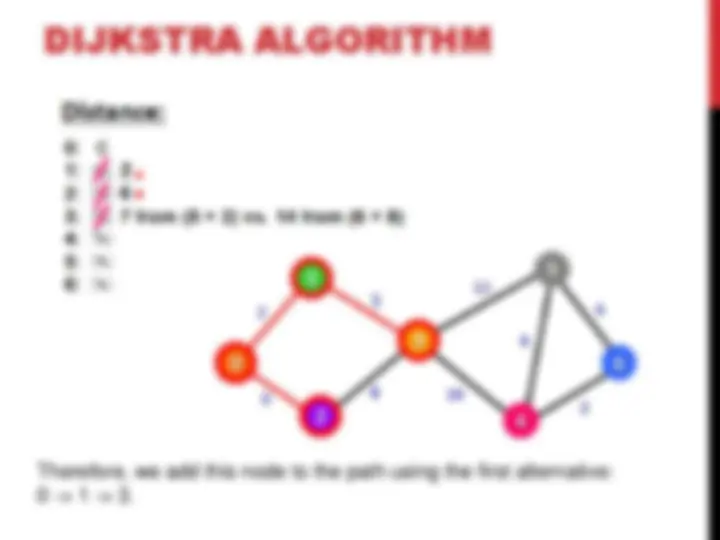
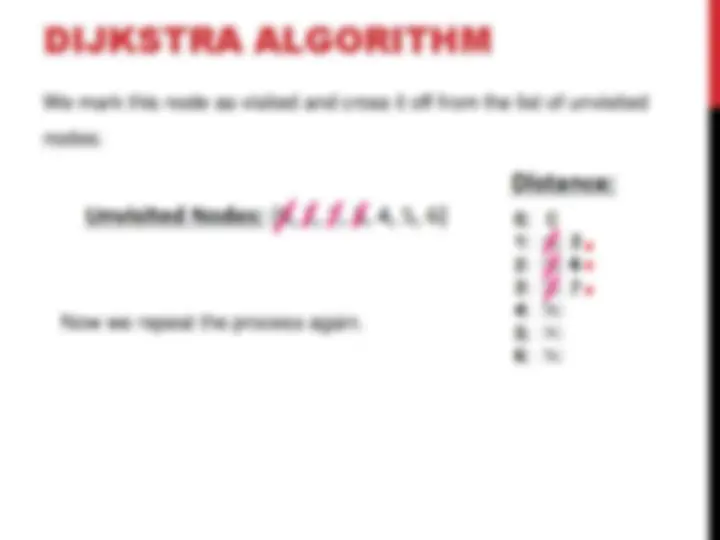
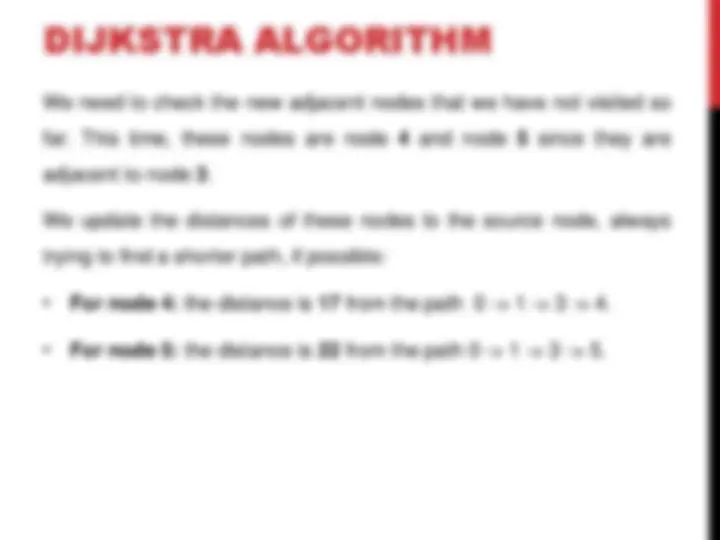
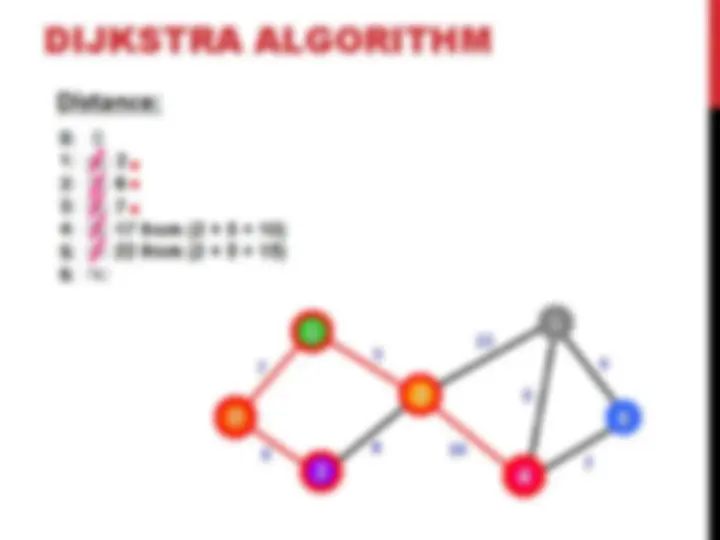
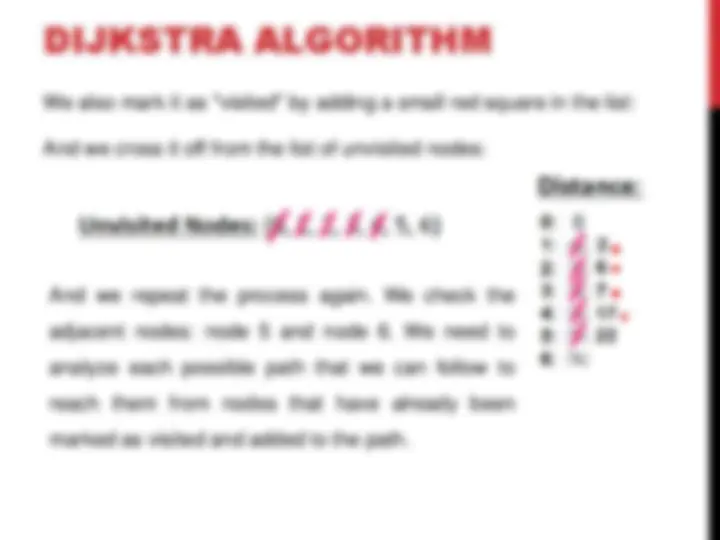
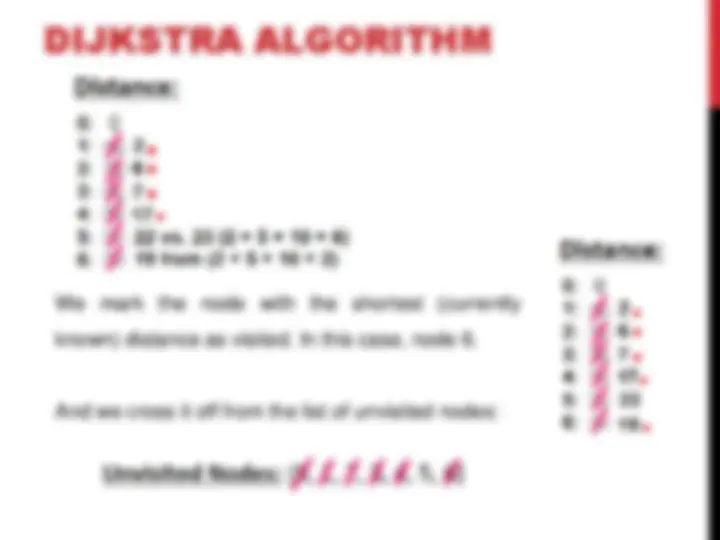
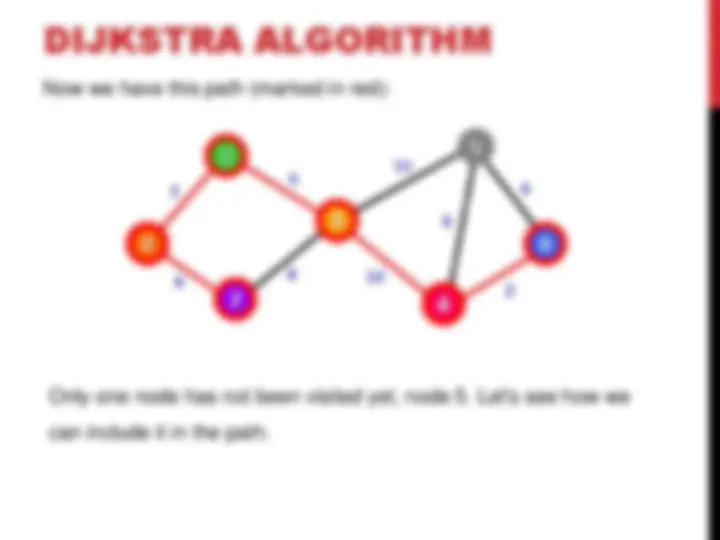
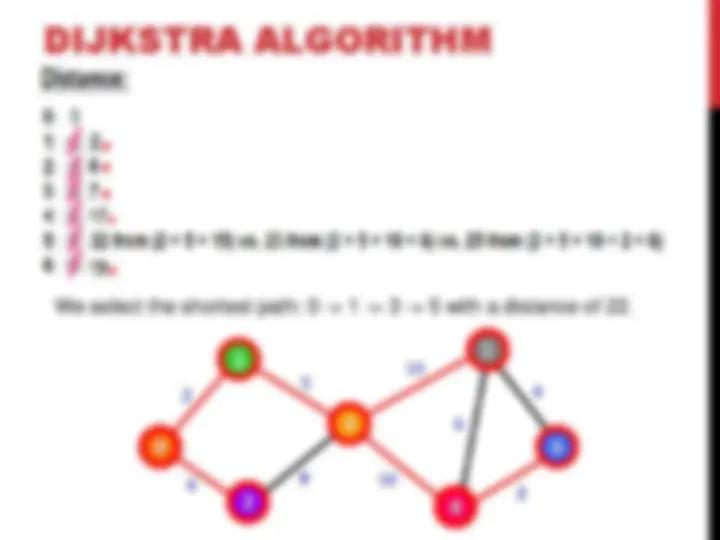
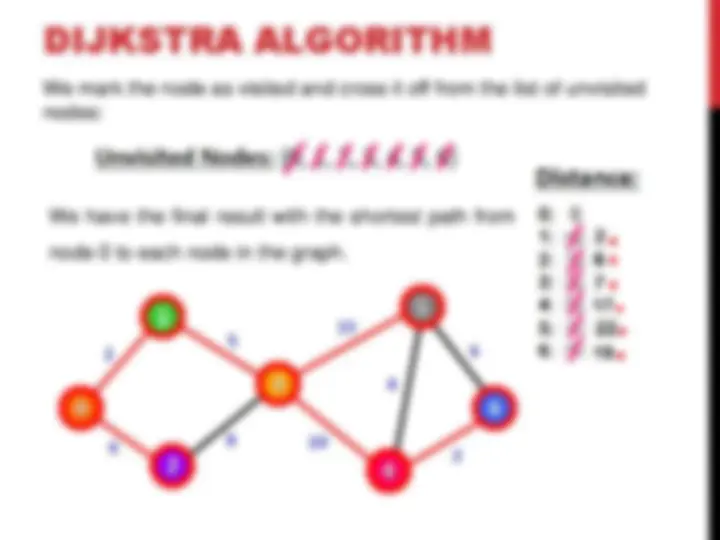



Study with the several resources on Docsity

Earn points by helping other students or get them with a premium plan


Prepare for your exams
Study with the several resources on Docsity

Earn points to download
Earn points by helping other students or get them with a premium plan
Community
Ask the community for help and clear up your study doubts
Discover the best universities in your country according to Docsity users
Free resources
Download our free guides on studying techniques, anxiety management strategies, and thesis advice from Docsity tutors
This gives introduction to graphs module in data structure
Typology: Summaries
1 / 76

This page cannot be seen from the preview
Don't miss anything!





































































A Graph is a non-linear data structure consisting of vertices and edges.
The vertices are sometimes also referred to as nodes and the edges are lines or arcs that connect any two nodes in the graph.
Definition
A Graph is composed of a set of vertices( V ) and a set of edges( E ). The graph is denoted by G(E, V).
Path
A path can be defined as the sequence of nodes that are followed in order to reach some terminal node V from the initial node U.
Closed Path
A path will be called as closed path if the initial node is same as terminal node. A path will be closed path if V 0 =VN.
Simple Path
If all the nodes of the graph are distinct with an exception V 0 =VN, then such path P is called as closed simple path.
Cycle
A cycle can be defined as the path which has no repeated edges or vertices except the first and last vertices.
Connected Graph
A connected graph is the one in which some path exists between every two vertices (u, v) in V. There are no isolated nodes in connected graph.
Complete Graph
A complete graph is the one in which every node is connected with all other nodes. A complete graph contain n(n-1)/2 edges where n is the number of nodes in the graph.
Loop
An edge that is associated with the similar end points can be called as Loop.
Adjacent Nodes
If two nodes u and v are connected via an edge e, then the nodes u and v are called as neighbours or adjacent nodes.
Degree of the Node
A degree of a node is the number of edges that are connected with that node. A node with degree 0 is called as isolated node.
Graphs are commonly represented in two ways:
2. Adjacency List
An adjacency list represents a graph as an array of linked lists.
The index of the array represents a vertex and each element in its linked list represents the other vertices that form an edge with the vertex.
The most common graph operations are:
Step 1: SET STATUS = 1 (ready state) for each node in G
Step 2: Enqueue the starting node A and set its STATUS = 2 (waiting state)
Step 3: Repeat Steps 4 and 5 until QUEUE is empty
Step 4: Dequeue a node N. Process it and set its STATUS = 3 (processed state).
Step 5: Enqueue all the neighbours of N that are in the ready state (whose STATUS = 1) and set their STATUS = 2 (waiting state)
[END OF LOOP]
Step 6: EXIT
Step 2 - Now, delete node A from queue1 and add it into queue2. Insert all neighbors of node A to queue1.
QUEUE1 = {B, D}
QUEUE2 = {A}
Step 3 - Now, delete node B from queue1 and add it into queue2. Insert all neighbors of node B to queue1.
QUEUE1 = {D, C, F}
QUEUE2 = {A, B}
Step 4 - Now, delete node D from queue1 and add it into queue2. Insert all neighbors of node D to queue1. The only neighbor of Node D is F since it is already inserted, so it will not be inserted again.
QUEUE1 = {C, F}
QUEUE2 = {A, B, D}
Step 5 - Delete node C from queue1 and add it into queue2. Insert all neighbors of node C to queue1.
QUEUE1 = {F, E, G}
QUEUE2 = {A, B, D, C}
Time complexity of BFS depends upon the data structure used to represent the graph. The time complexity of BFS algorithm is O(V+E) , since in the worst case, BFS algorithm explores every node and edge. In a graph, the number of vertices is O(V), whereas the number of edges is O(E).
The space complexity of BFS can be expressed as O(V) , where V is the number of vertices.